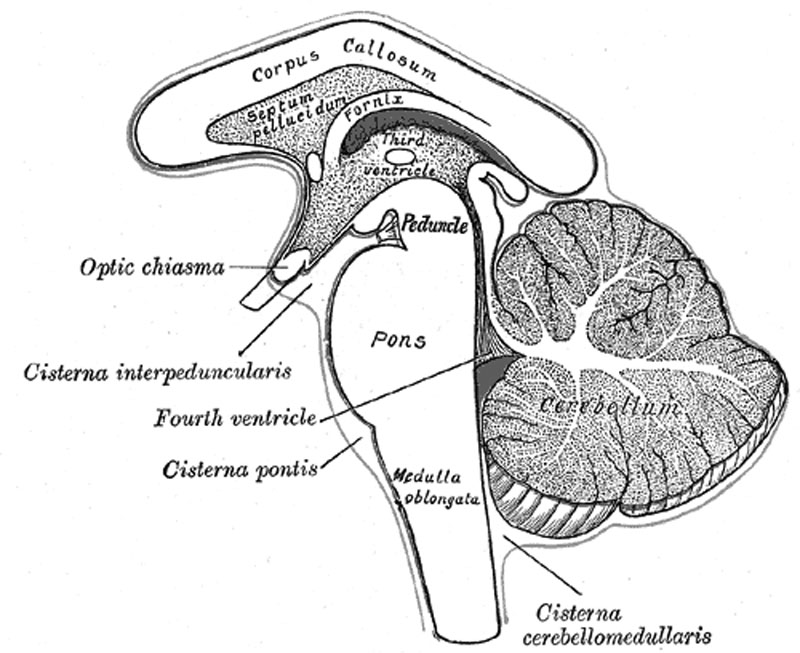Midbrain and Hindbrain
- The brainstem is the posterior part of the brain, adjoining and structurally continuous with the spinal cord. It includes the medulla oblongata, pons, and midbrain.
- The midbrain or mesencephalon is a portion of the central nervous system associated with vision, hearing, motor control, sleep/wake, arousal (alertness), and temperature regulation.
- The substantia nigra is a brain structure located in the mesencephalon that plays an important role in reward, addiction, and movement.
- The superior colliculus is a structure of the midbrain which directs behavioral responses toward specific points in body-centered space.
- The inferior colliculus is the principal midbrain nucleus of the auditory pathway and receives input from several peripheral brainstem nuclei in the auditory pathway, as well as inputs from the auditory cortex.
- Composed of several neuronal circuits connecting the brainstem to the cortex, the reticular activating system is responsible for regulating wakefulness and sleep-wake transitions
- The hindbrain or rhombencephalon includes the medulla, pons, and cerebellum. Together they support vital bodily processes.
- The myelencephalon is the most posterior region of the embryonic hindbrain, from which the medulla oblongata develops.
- The cerebellum is a region of the hindbrain that plays an important role in motor control. It may also be involved in some cognitive functions such as attention and language, and in regulating fear and pleasure responses.
- The pons relays signals from the forebrain to the cerebellum. It also plays a role in regulating sleep, respiration, swallowing, bladder control, hearing, equilibrium, taste, eye movement, facial expressions, facial sensation, and posture.
- Anterior to the cerebellum, the medulla oblongata is responsible for multiple autonomic functions ranging from vomiting to sneezing. It also contains the cardiac, respiratory, vomiting and vasomotor centers.
